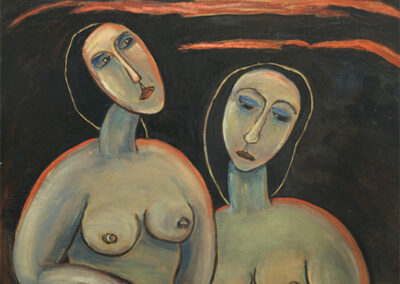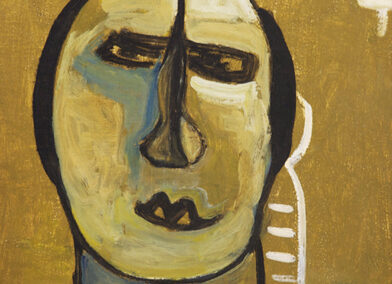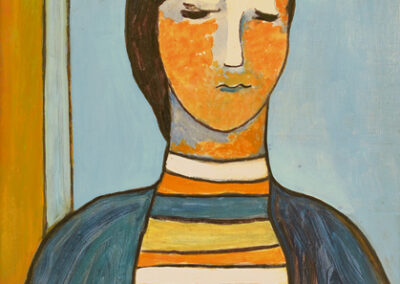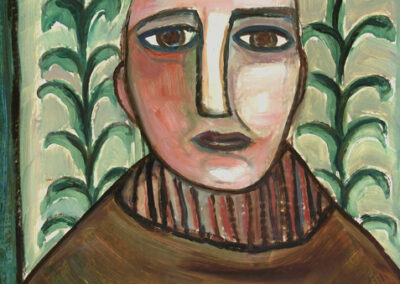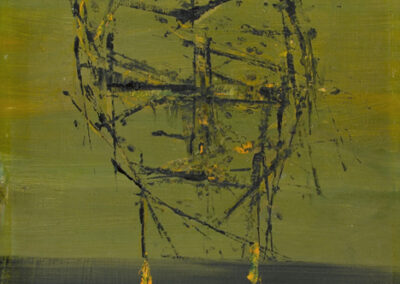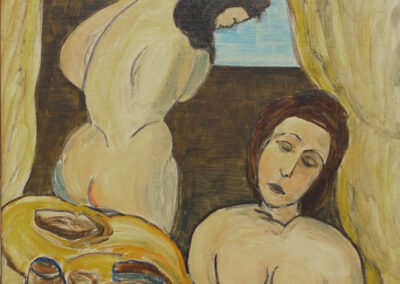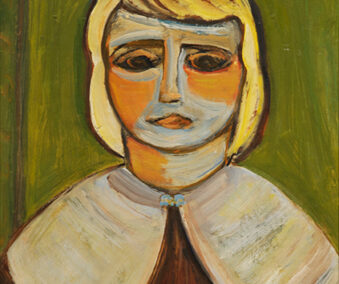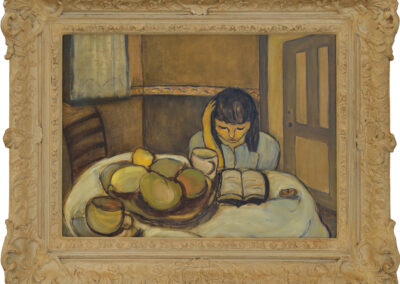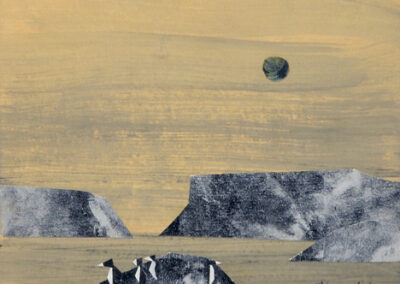Our next Artist You Need To Know was an artist influenced equally by Surrealism, Expressionism and Cubism, melding these sometimes disparate movements into unique works. “I paint what I dream,” Florence Vale (1909 – 2003) stated, and one critic offered that “Her art was a world in which fantasy and reality are interwoven to create a private and secret environment” (Natalie Luckyj).
Vale came to Canada in 1910. Her family settled in Toronto, and despite having to leave school at seven to work in the garment district of that city, she and her husband (painter Albert Franck, whose images of Toronto houses and urban spaces are among some of the most iconic of the city) were supportive of a variety of artists and arts organizations. They organized the Unaffiliated Artists Exhibition at the Eaton’s College Street Gallery in both 1950 and 1951.
-

Young Man in Striped Sweater, 1968
-

Le Fort, 1958
-

At the Steam Bath, 1958
-

Image, 1962
-

Nudes and still life, 1948
-

Girl With Yellow Hair, 1957
This later developed into how Vale was an integral part of the Gerrard Street bohemian circle and the house she shared with Franck became a community focal point for young artists, CBC personalities, writers, musicians, and critics. In this respect, her ‘lack’ of a formal education was irrelevant, as this diverse group helped shape her ideas and artwork.
Primarily self taught as an artist, Vale worked in watercolour, pen and ink, collage and mixed media constructions. Collage was a natural progression as her works became more about a simplification of form and surface texture, also employing abstract shapes and stark compositions. Many of her works have both an erotic, but whimsical quality. Vale was in various exhibitions in Ontario, Quebec and New York State.
In 1980, the Agnes Etherington Art Centre organized “Metamorphosis – Memories, Dreams and Reflections – The Work of Florence Vale”, the first major retrospective of her work. The Peel Art Gallery, Museum and Archives (PAMA) also mounted a major retrospective of her work, The Art of Florence Vale in 2010.

